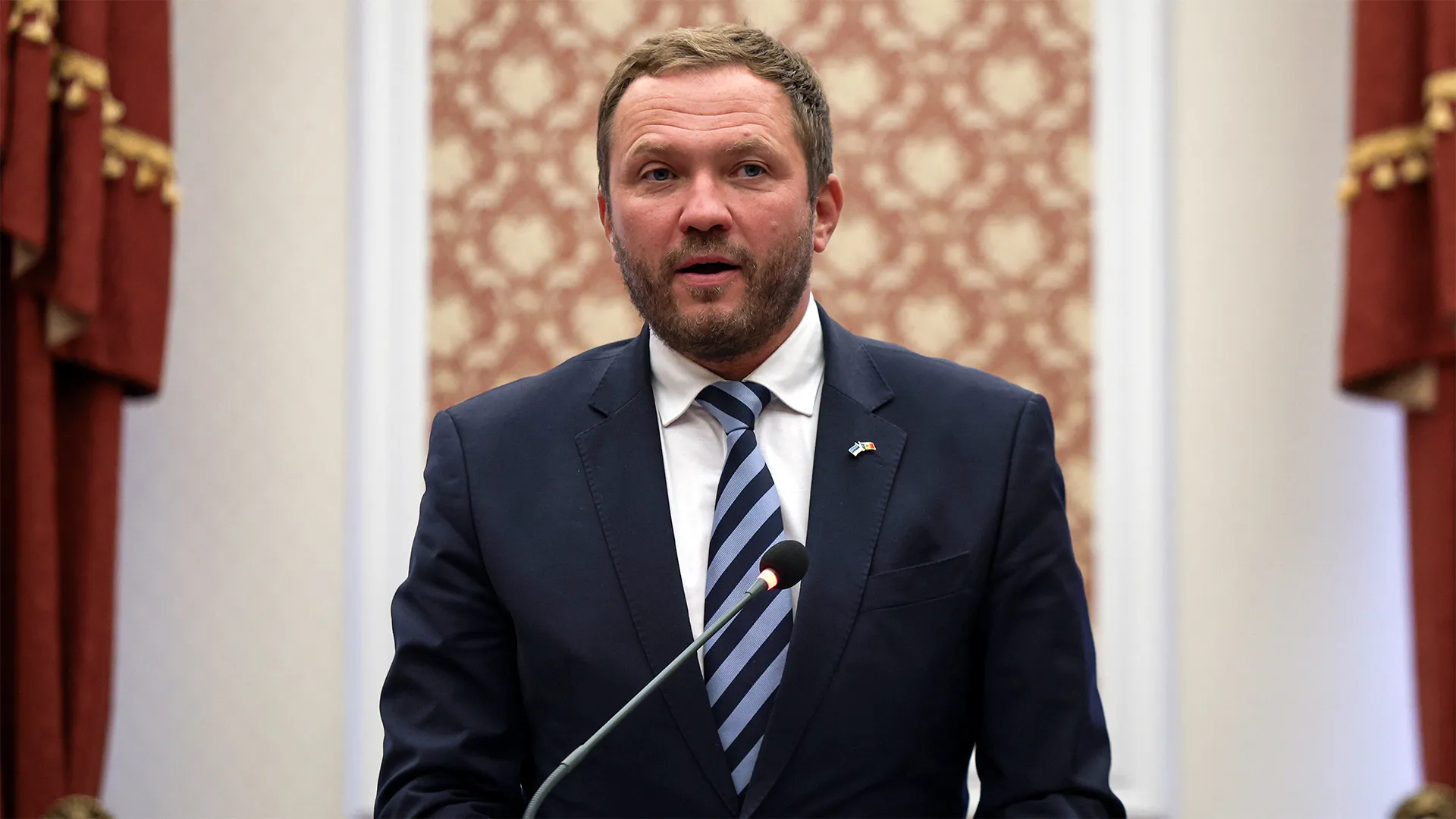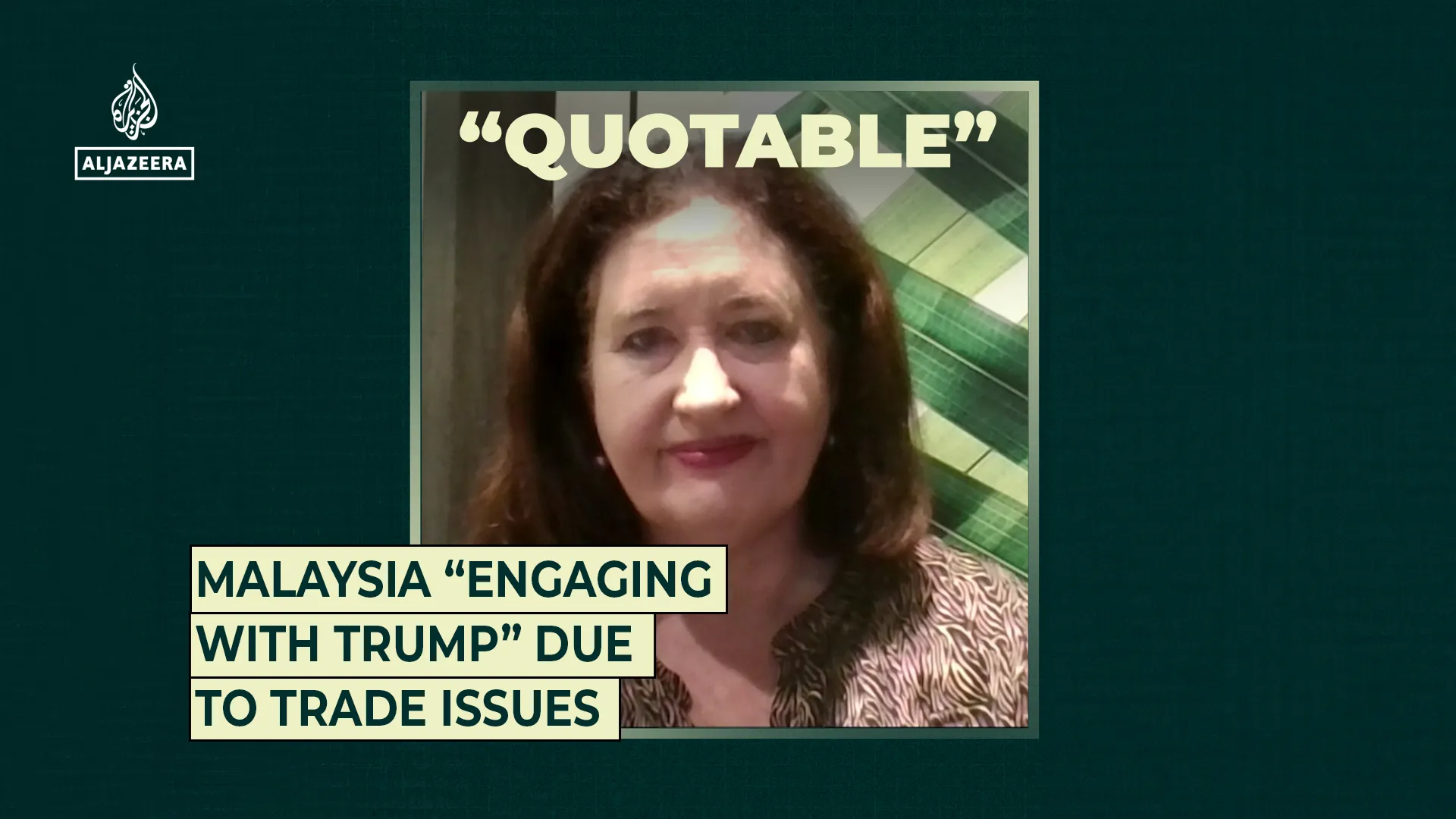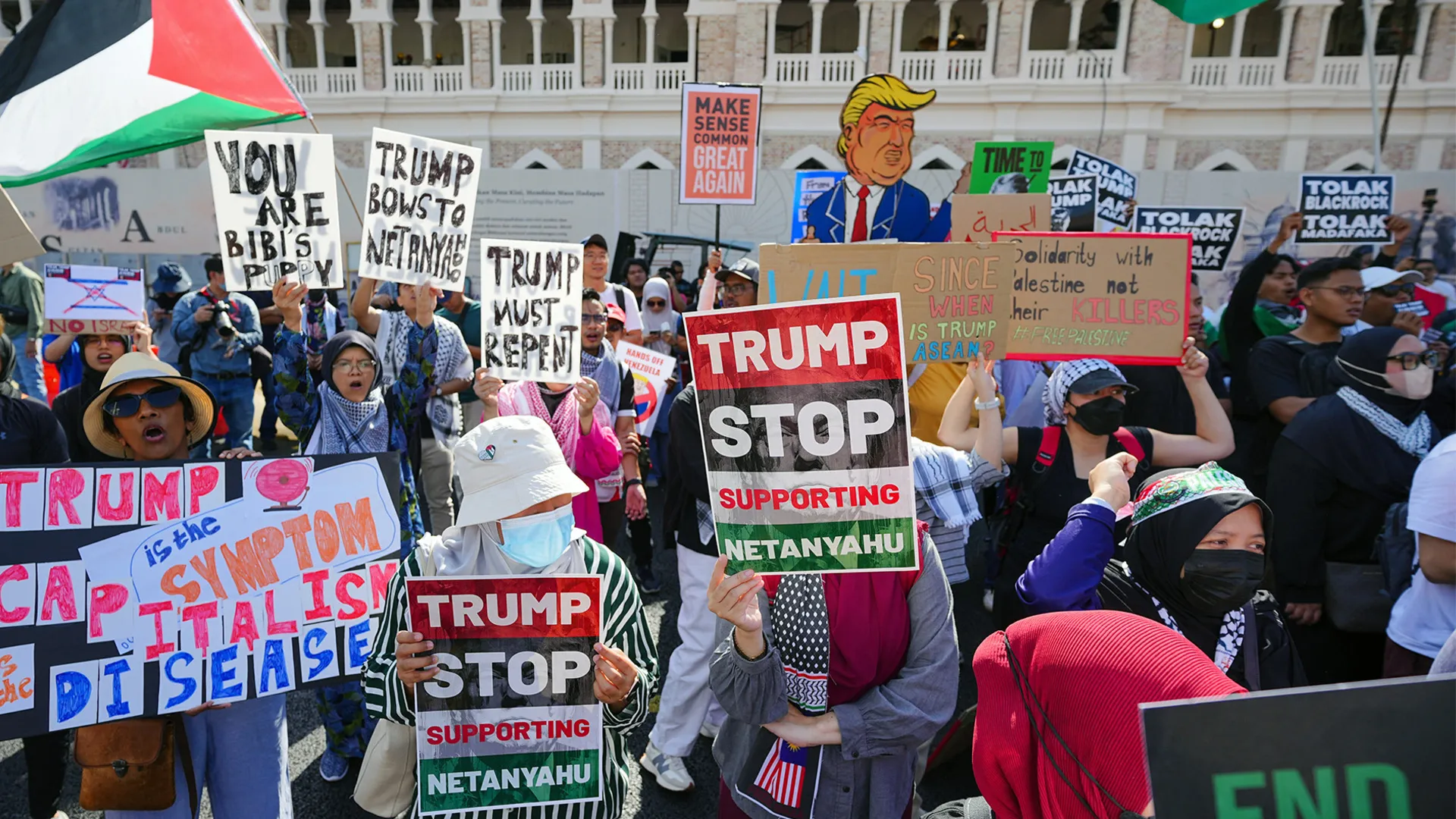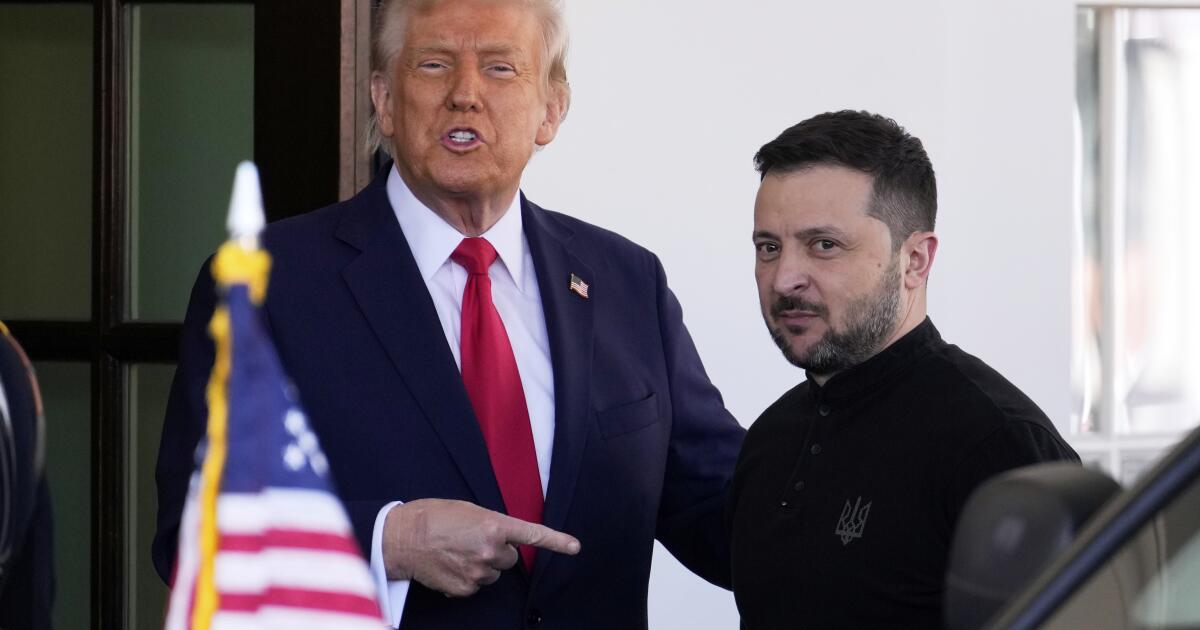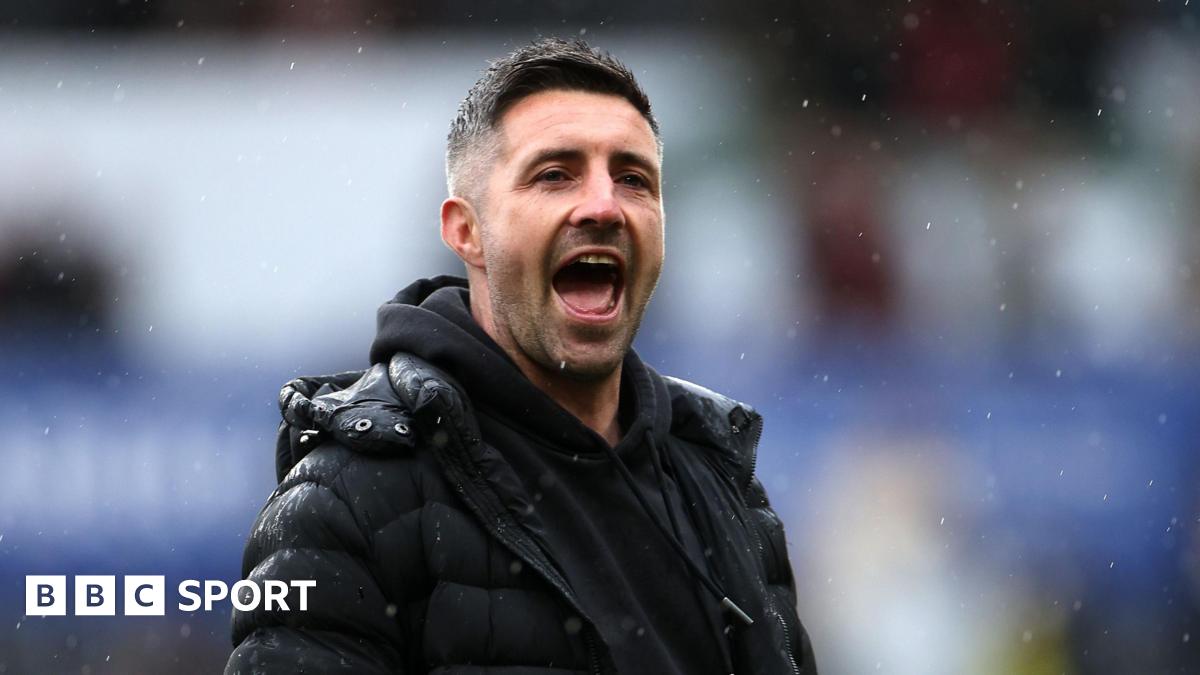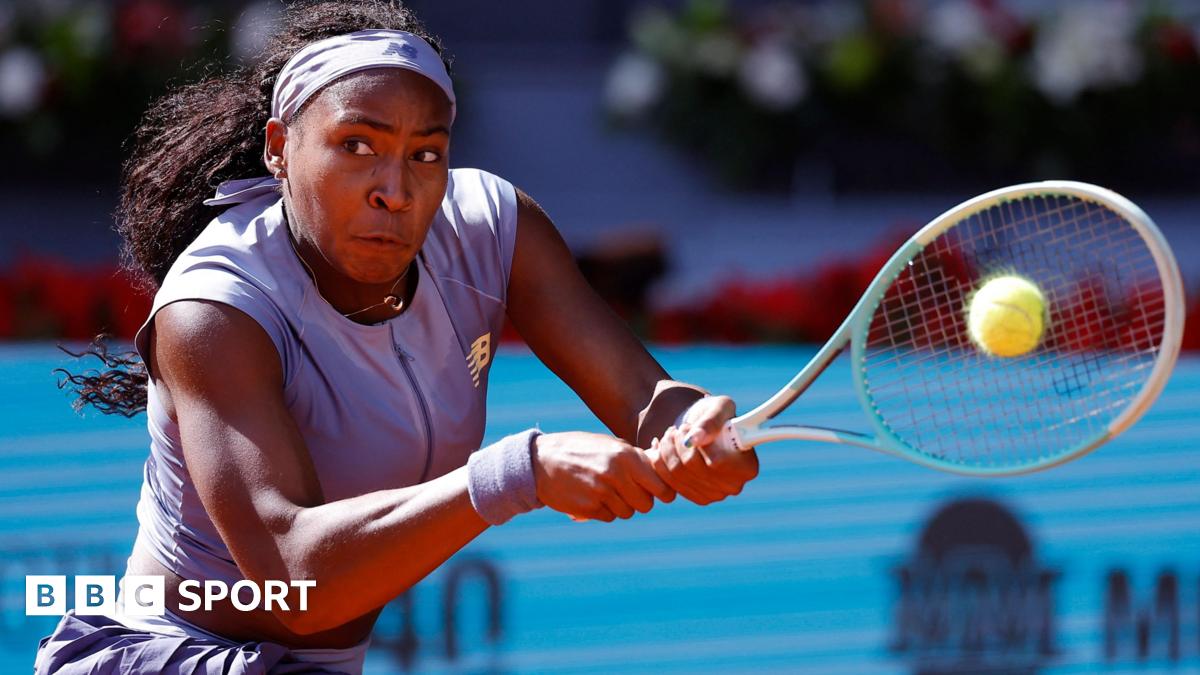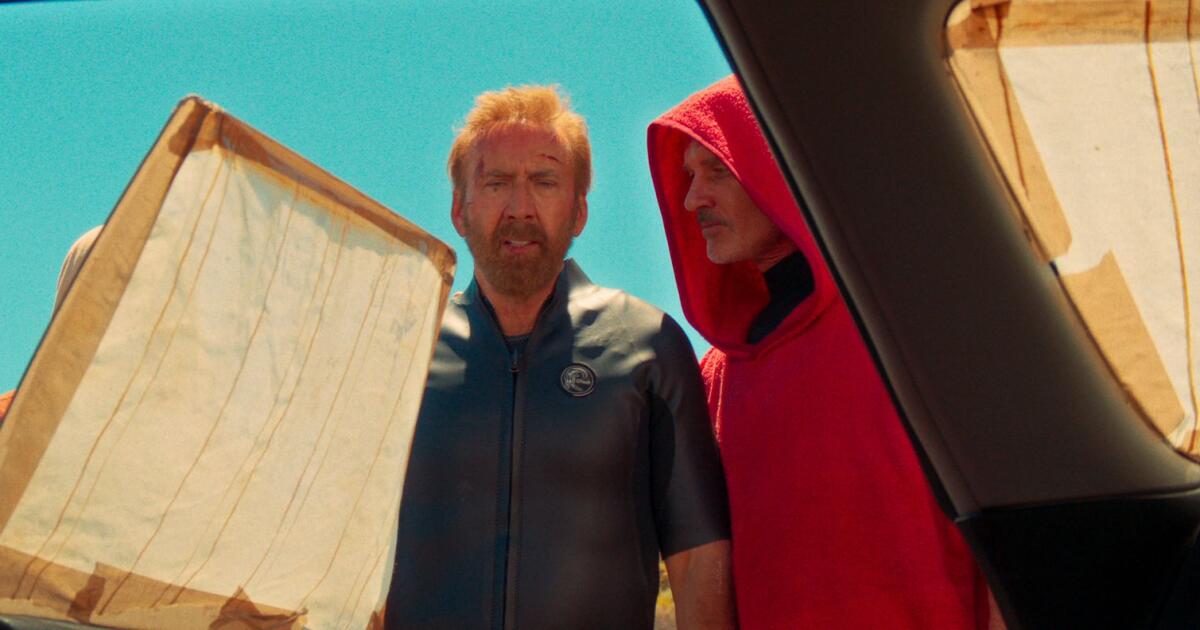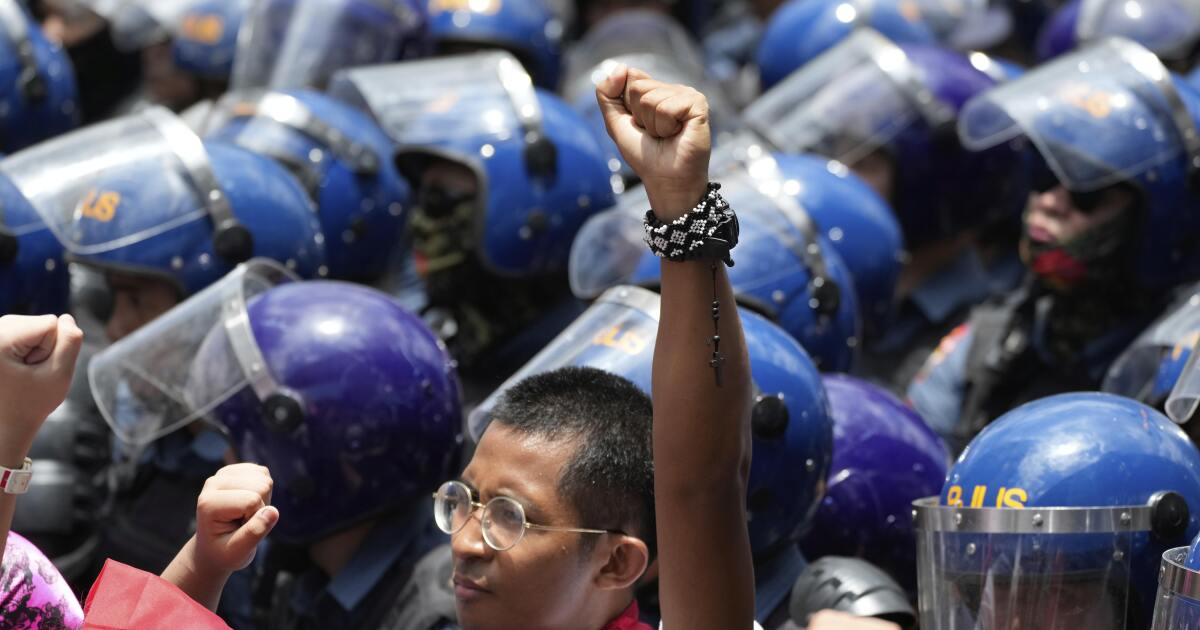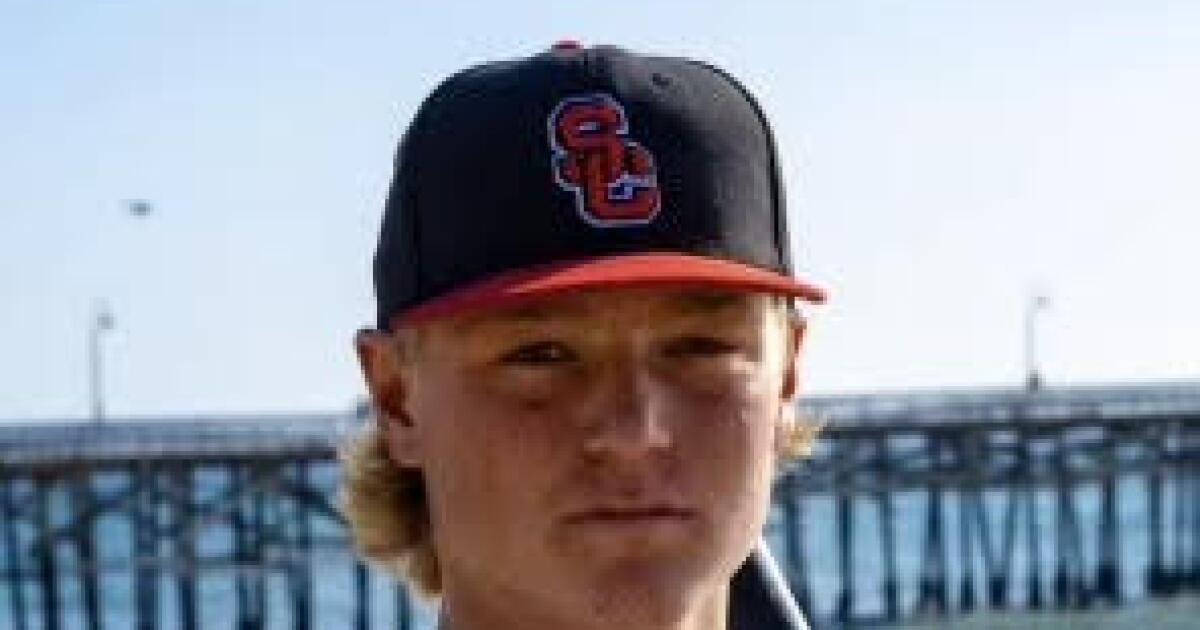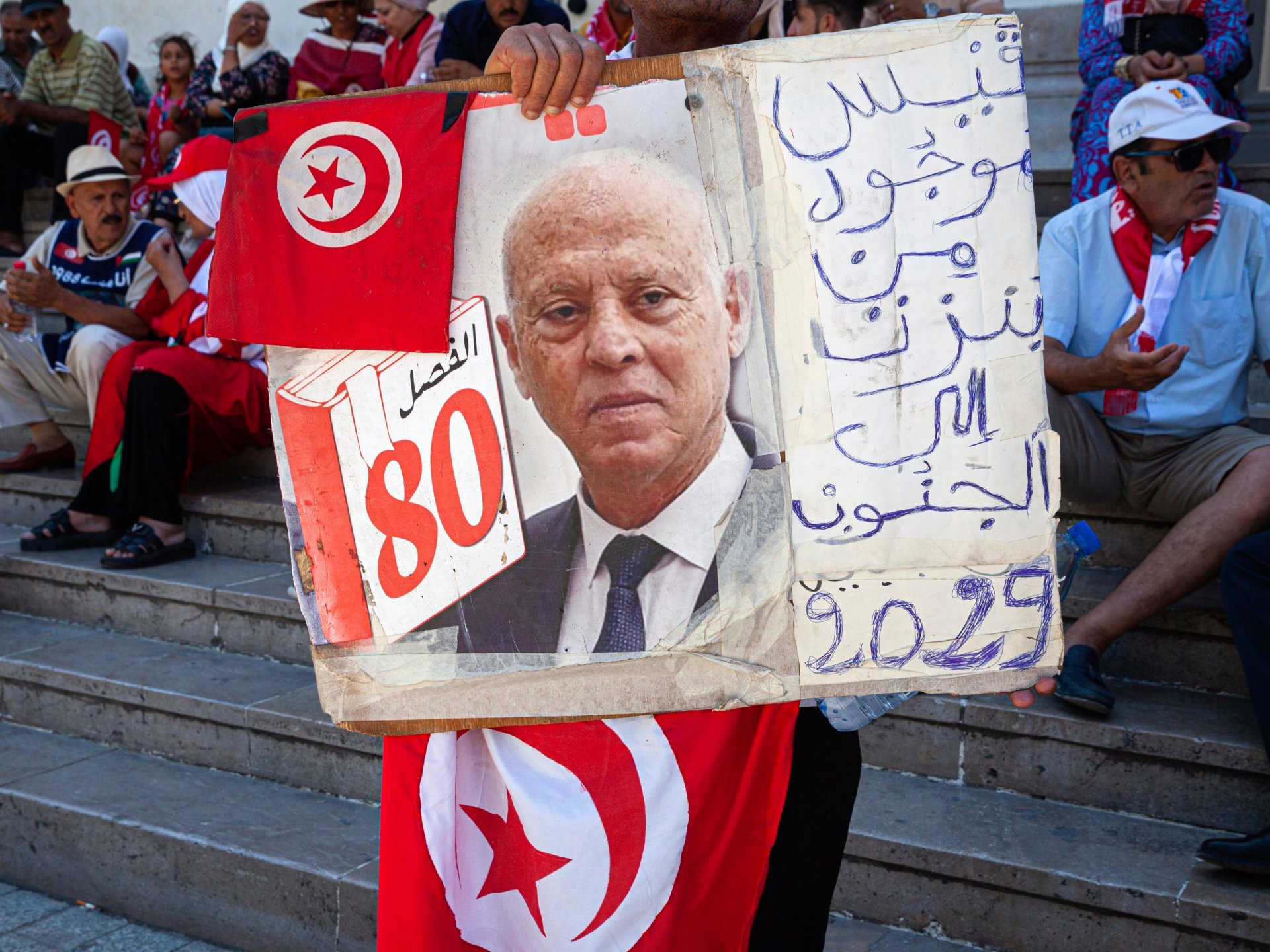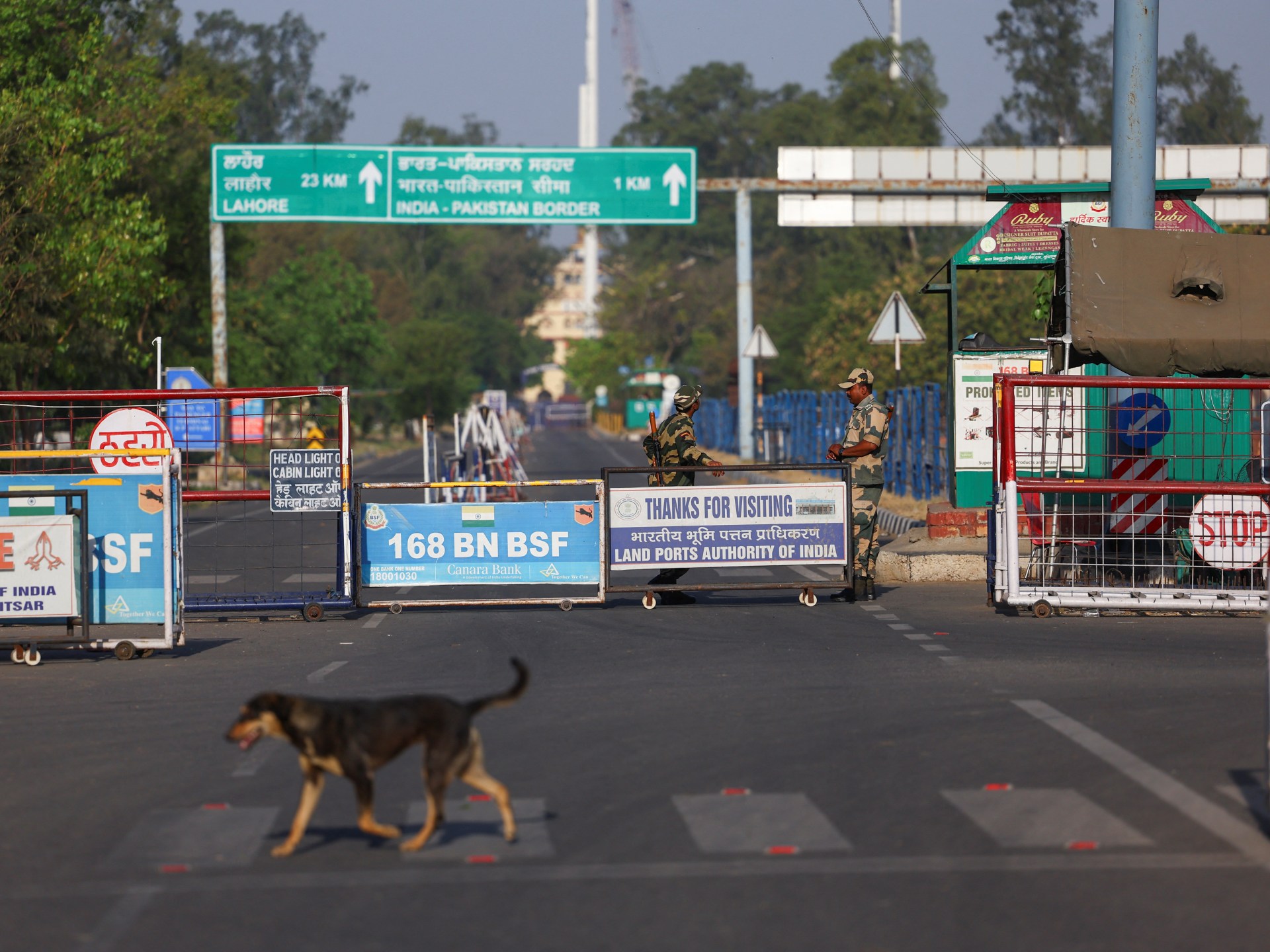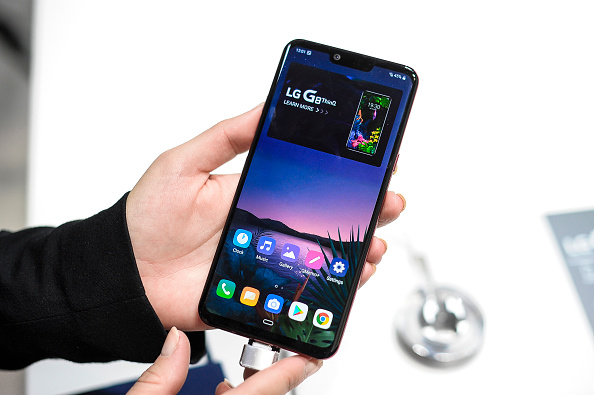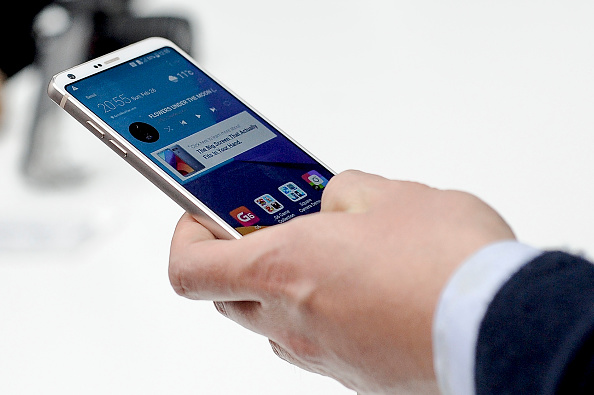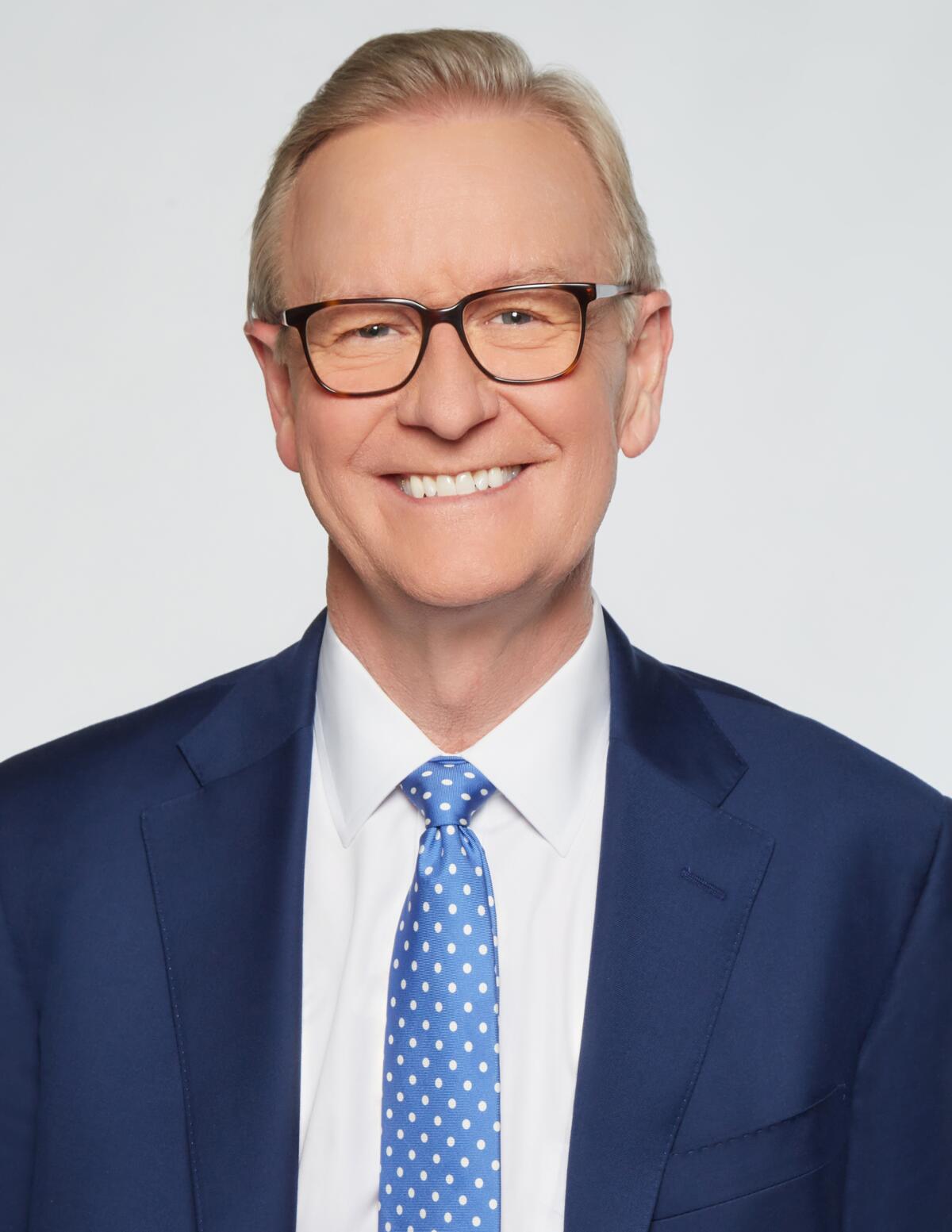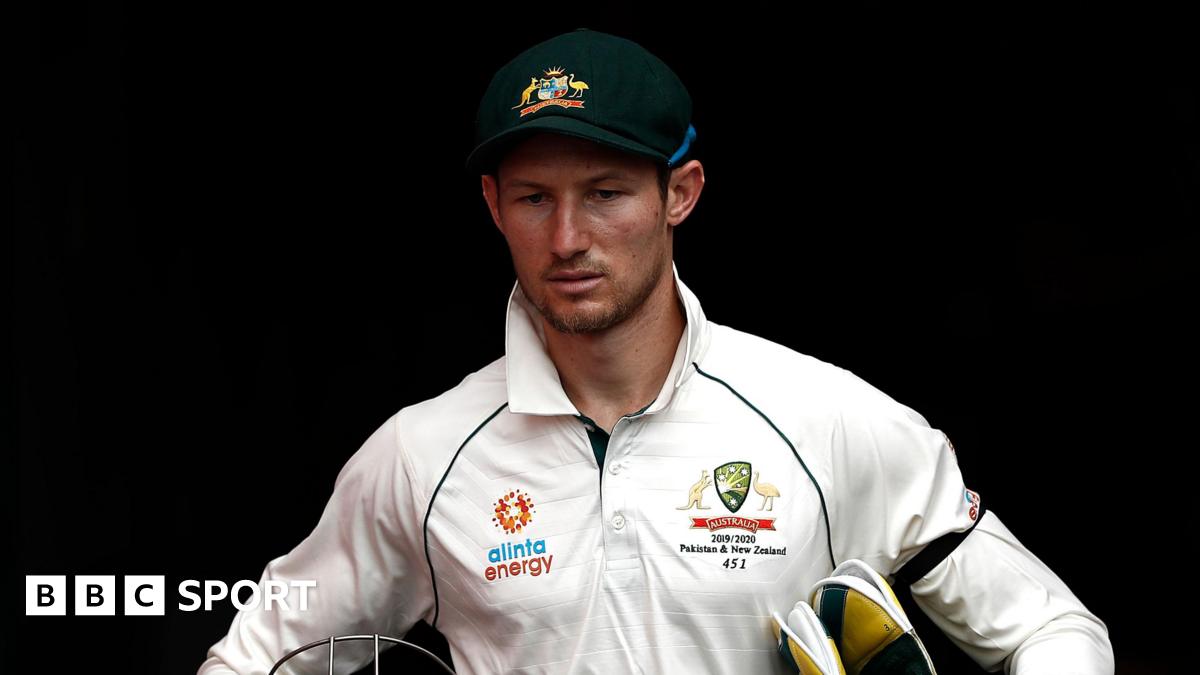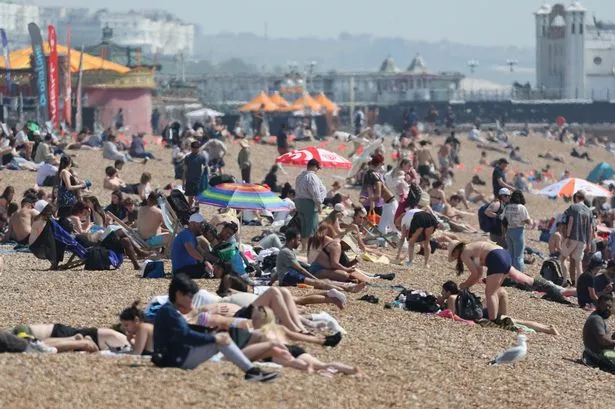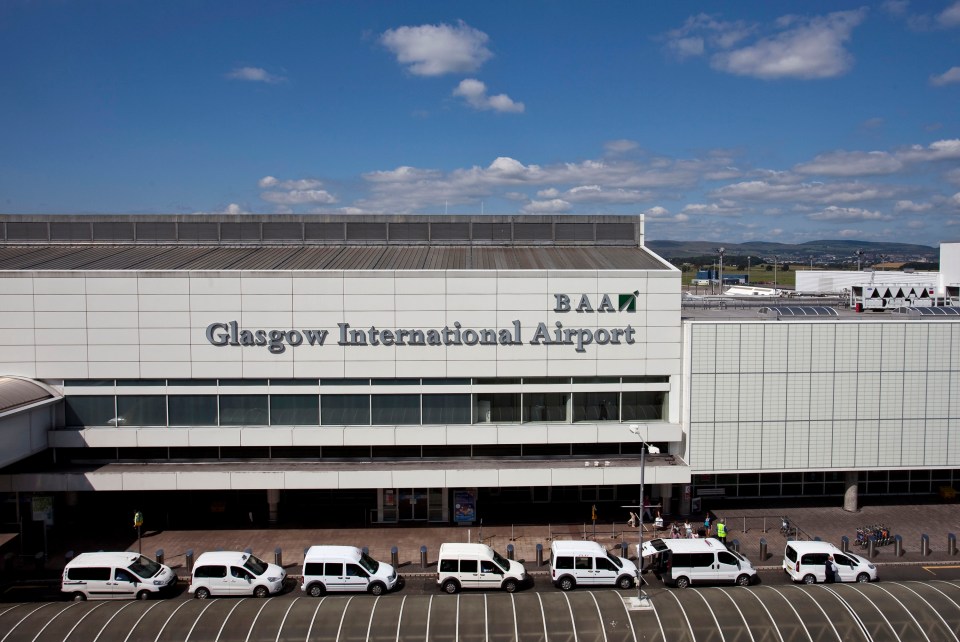Major luxury retailer is latest to be hit by cyber attack with ‘restricted internet’ after M&S plunged into chaos – The Sun
A MAJOR luxury retailer is the latest victim of a cyber attack after both M&S and Co-op were hit.
Shoppers have been warned Harrods have “restricted internet access” after the attempted breach which left some customers struggling to pay.
As reported by Sky, a Harrods spokesperson said: “We recently experienced attempts to gain unauthorised access to some of our systems.
“Our seasoned IT security team immediately took proactive steps to keep systems safe, and as a result, we have restricted internet access at our sites today.
“Currently, all sites including our Knightsbridge store, H beauty stores and airport stores remain open to welcome customers.
“Customers can also continue to shop via harrods.com.
“We are not asking our customers to do anything differently at this point, and we will continue to provide updates as necessary.”
More to follow… For the latest news on this story keep checking back at The Sun Online
Thesun.co.uk is your go-to destination for the best celebrity news, real-life stories, jaw-dropping pictures and must-see video.
Like us on Facebook at www.facebook.com/thesun and follow us from our main Twitter account at @TheSun.
Ukraine and the U.S. finally signed a minerals deal. What does it include?
KYIV, Ukraine — After months of tense negotiations, the U.S. and Ukraine signed a deal that is expected to give Washington access to the country’s critical minerals and other natural resources, an agreement Kyiv hopes will secure long-term support for its defense against Russia.
According to Ukrainian officials, the version of the deal signed Wednesday is far more beneficial to Ukraine than previous versions, which they said reduced Kyiv to a junior partner and gave Washington unprecedented rights to the country’s resources.
The agreement — which the Ukrainian parliament must ratify — would establish a reconstruction fund for Ukraine that Ukrainian officials hope will be a vehicle to ensure future American military assistance. A previous agreement was nearly signed before being derailed in a tense Oval Office meeting involving U.S. President Trump, U.S. Vice President JD Vance and Ukrainian President Volodymyr Zelensky.
“We have formed a version of the agreement that provides mutually beneficial conditions for both countries. This is an agreement in which the United States notes its commitment to promoting long-term peace in Ukraine and recognizes the contribution that Ukraine has made to global security by giving up its nuclear arsenal,” Economy Minister Yulia Svyrydenko, who signed the deal for Ukraine, said in a post on Facebook.
The signing comes during what U.S. Secretary of State Marco Rubio said would be a “very critical” week for U.S.-led efforts to end the war that appear to have stalled. Ukraine sees the deal as a way to ensure that its biggest and most consequential ally stays engaged and doesn’t freeze military support, which has been key in its 3-year-old fight against Russia’s full-scale invasion.
“This agreement signals clearly to Russia that the Trump administration is committed to a peace process centered on a free, sovereign, and prosperous Ukraine over the long term,” Treasury Secretary Scott Bessent, who signed for the U.S., said in a statement.
Here is a look at the deal.
What does the deal include?
The deal covers minerals, including rare earth elements, but also other valuable resources, including oil and natural gas, according to the text released by Ukraine’s government.
It does not include resources that are already a source of revenue for the Ukrainian state. In other words, any profits under the deal are dependent on the success of new investments. Ukrainian officials have also noted that it does not refer to any debt obligations for Kyiv, meaning profits from the fund will likely not go toward the paying the U.S. back for its previous support.
Officials have also emphasized that the agreement ensures full ownership of the resources remains with Ukraine, and the state will determine what can be extracted and where.
The text of the deal lists 55 minerals but says more can be agreed to.
Trump has repeatedly expressed interest in Ukraine’s rare earth elements, and some of them are included in the list, as are other critical minerals, such as titanium, lithium and uranium.
What are rare earth elements?
They are a group of 17 elements that are essential to many kinds of consumer technology, including cellphones, hard drives and electric and hybrid vehicles.
China is the world’s largest producer of rare earth elements, and both the U.S and Europe have sought to reduce their dependence on Beijing, Trump’s chief geopolitical adversary.
They include elements such as lanthanum, cerium and scandium, which are listed in the deal.
How will the fund work?
The agreement establishes a reconstruction investment fund, and both the U.S. and Ukraine will have an equal say in its management, according to Svyrydenko.
The fund will be supported by the U.S. government through the U.S. International Development Finance Corp. agency, which Ukraine hopes will attract investment and technology from American and European countries.
Ukraine is expected to contribute 50% of all future profits from government-owned natural resources into the fund. The United States will also contribute in the form of direct funds and equipment, including badly needed air defense systems and other military aid.
Contributions to the fund will be reinvested in projects related to mining, oil and gas as well as infrastructure.
No profits will not be taken from the fund for the first 10 years, Svyrydenko said.
Trump administration officials initially pushed for a deal in which Washington would receive $500 billion in profits from exploited minerals as compensation for its wartime support.
But Zelensky rejected the offer, saying he would not sign off on an agreement “that will be paid off by 10 generations of Ukrainians.”
What is the state of Ukraine’s minerals industry?
Ukraine’s rare earth elements are largely untapped because of state policies regulating the industry, a lack of good information about deposits, and the war.
The industry’s potential is unclear since geological data are thin because mineral reserves are scattered across Ukraine, and existing studies are considered largely inadequate, according to businessmen and analysts.
In general, however, the outlook for Ukrainian natural resources is promising. The country’s reserves of titanium, a key component for the aerospace, medical and automotive industries, are believed to be among Europe’s largest. Ukraine also holds some of Europe’s largest known reserves of lithium, which is required to produce batteries, ceramics and glass.
In 2021, the Ukrainian mineral industry accounted for 6.1% of the country’s gross domestic product and 30% of exports.
An estimated 40% of Ukraine’s metallic mineral resources are inaccessible because of Russian occupation, according to data from We Build Ukraine, a Kyiv-based think tank. Ukraine has argued that it’s in Trump’s interest to develop the remainder before Russian advances capture more.
Kullab writes for the Associated Press.
Alan Sheehan: Premier League the ‘dream’ for new Swansea City boss
After winning the Championship play-off final in 2011, Swansea spent seven years in the Premier League before relegation in 2018.
They came close to rejoining the elite in 2020 and 2021, when Steve Cooper led the club to successive play-off campaigns.
Since then, however, Swansea’s best second-tier finish is 10th, with the club’s ambition questioned at various points over the last seven years.
But with a new ownership group in place since last November, Sheehan says there is a desire in the boardroom to return to the highest level.
“I think in the Championship, if you are not talking about the Premier League, I don’t know why we’re here really,” he added.
“It’s not something that’s shouted out, it’s understood that we all want to get there.
“You have got to make a whole lot of right decisions, then you have to have positive energy throughout, you have to win games, you have to build confidence, you have to have the fans onside, you have to have the board onside and the players onside.”
Kohl’s fires CEO Ashley Buchanan for conflict of interest with vendors

Kohl’s on Thursday announced it has fired CEO Ashley Buchanan over a conflict of interest involving vendors. File Photo by John G. Mabanglo/EPA-EFE
May 1 (UPI) — Kohl’s announced Thursday that CEO Ashley Buchanan was terminated for cause after violating company policies related to transactions with vendors.
“An investigation conducted by outside counsel and overseen by the Audit Committee of the Board determined Mr. Buchanan violated company policies by directing the Company to engage in vendor transactions that involved undisclosed conflicts of interest, which the Board determined to be cause,” Kohl’s said in a statement.
Kohl’s did not specify who the vendors were or exactly what the conflict of interest that led to Buchanan’s firing.
Buchanan held the CEO job for just five months.
According to Kohl’s the conflict of interest did not involve any other company personnel. The Kohl’s board also said Buchanan’s firing is “unrelated to the Company’s performance, financial reporting, results of operations.”
“Michael brings over three decades of leadership experience across retail and consumer goods companies, having served as CEO of Eyemart Express and in senior roles at Walmart, L Brands and PepsiCo,” John Schlifske, chair of the Kohl’s Nominating and ESG Committee, said in a statement.
The board appointed Michael Bender to serve as interim CEO, as Schlifske said it has “full confidence” in him.
“Working with our talented leadership team, Board, and thousands of associates, I am committed to continuing the execution of our strategic framework to grow shareholder value,” Bender said.
The Kohl’s board will start a search for a permanent CEO and has hired a search firm to help with the process.
Madrid Open: Coco Gauff thrashes Iga Swiatek to reach final
Coco Gauff produced a stunning display to thrash four-time French Open champion Iga Swiatek 6-1 6-1 and reach the final of the Madrid Open.
Gauff, 21, had never beaten her Polish opponent on clay before but took just 64 minutes to dispatch the world number two.
American Gauff will play world number one Aryna Sabalenka or Elina Svitolina in the final.
Reigning champion Swiatek had won nine consecutive matches in Madrid – and 15 of 16 going back to her loss to Sabalenka in the 2023 final – but had no answer to Gauff.
Gauff, who won the US Open in 2023, hit seven aces and won 19 of 21 points on her first serve in a dominant performance.
‘The Surfer’ review: Nicolas Cage rides the edge of madness
A sunny beach noir sounds like a contradiction until you’re sweating in the sand aware of the sting in your eyes and the uncomfortable sense that there’s something wrong with you, your life and how you’re living it. Why aren’t you having more fun?
“The Surfer,” directed by Lorcan Finnegan (“Vivarium”) and written by Thomas Martin, captures that scenic unease and cranks up the heat until even its own bright yellow retro title font looks sarcastic. It’s a film in which the mythic crashes into the ridiculous, the intersection where its star Nicolas Cage has also staked his career. Playing an unnamed surfer stuck high and dry atop a parched parking lot, Cage stares down at the waves below with the thirst of a battered cartoon coyote. You half-expect to see his pupils pop out of his binocular lenses.
The action all takes place on a small spot of coastland in fictitious Luna Bay, Australia, where Cage’s character claims he grew up before moving to California at age 15. His accent doesn’t have a trace of it, but at least his skin is tanned the same shade of orange as his hair. Now a linen-suit-clad businessman, he’s returned with his own teenage son (Finn Little) shortly before Christmas with some paternal ocean wisdom. “You either surf it or you get wiped out,” Cage tells his boy, philosophically.
The kid is unimpressed by him; the local surf bullies even less so. Cage doesn’t get a toe in the tide before he’s given the heave-ho by a pretentious group of quasi-spiritual surfers called the Bay Boys. The beach is public, Cage insists. The Bay Boys’ guru Scalley (Julian McMahon, fantastic) is unmoved. “Yeah, but nah,” Scalley says and shrugs, his chill turning ice cold. An intimidatingly fit and happy life coach, Scalley promotes the power of male primal energy, although the film is savvy enough to point out that he was also born rich and curates an Instagram. Kudos to costumer Lien See Leong for outfitting McMahon in a hooded terry cloth poncho that makes him look like Jesus walked across the water to hang ten.
“The Surfer” has a plot you could recount in 30 seconds. First, Cage won’t leave and then he can’t leave — and then he can’t do anything without the Bay Boys making him suffer. (“Suffer” and “surfer,” Martin’s script points out, are only one letter apart.) The film is inspired by a real-life surf gang from the Palos Verdes Peninsula, but everything from the pace to the performances has been amplified into absurdity. A minute never goes by without Cage’s circumstances getting worse. His insistence on staying put makes him sacrifice one status object after another — his phone, his shoes, his car — and it isn’t long until he’s limping and ranting and crouching next to condom wrappers while men chase him with tiki torches. Luna Bay drives people lunatic. It’s all building toward the same tsunami of rage.
Cage has been on a streak of making catchy low-budget B-movies by rising filmmakers such as “Pig,” “Dream Scenario” and “The Unbearable Weight of Massive Talent.” It’s a brilliant approach: His fame gets interesting projects off the ground and, in turn, he gets to be the biggest thing in them. Not every film works, but enough of them do, particularly the ones that promise violence — which this delivers, but not in the way you might think. Most of “The Surfer’s” damage is mental; we’re steeped in Cage’s descent. It would make a great double-feature with Burt Lancaster’s 1968 “The Swimmer,” another hallucinatory psychodrama about a braggart skidding downhill.
The tribalistic Bay Boys deserve sea urchin spikes jammed into their toes. You come to hate their enviable ease, the pink zinc cream slashed across their noses, their wagging tongues and middle fingers. (They even sabotage the water fountain, just like Rome’s Gen. Aquillius is said to have poisoned his enemy’s wells.) Their giant, phony smiles reminded me of dolphins circling their prey and their mean laughter is blended into the sound of cackling birds. I think the film knows that the gang name Bay Boys — the same one as the actual Californians — is a lame idea of cool. It’s hard for the characters to say it with menace. More unnerving is the way everyone just accepts these guys are in charge. Shrugs one ritzy woman, “It stops them beating the Botox out of their wives.”
At stake is our outrage that the beauty in this world has been commandeered by people who act like they own the planet. We wouldn’t be as invested if the stakes were privately owned — say, a golf club or a gated community — although Cage’s character with his luxury car and costly latte habit probably cares about those, too. He’s no honorable underdog, brushing off a bum (Nicholas Cassim) who begs him for help. Cage doesn’t want to equal the playing field. He either wants to belong or burn it all down.
For him, this beach is personal. As a boy, he played on this exact spot. As a man (and there’s more testosterone in this movie than water in the Pacific Ocean) he’s desperate to buy back his grandfather’s house on the cliff. These blue-green waves are his birthright. In phantasmagoric flashbacks, we learn that his family spilled blood in their foam. Now, that promise is receding by the hour as guys with happier families and healthier muscles take his place. The grief in this film is relatable to anyone who’s realized how hard it is to go home again, whether that means a newly gentrified neighborhood or simply the security of what a middle-class wage used to afford.
Sun and sea are in every frame. Golden light dapples on Cage’s face. Aerial shots of water are used as scene wipes and their crashing noise underscores his psychic distress. Radek Ladczuk’s psychedelic camerawork loves dramatic zooms and lenses that make bodies blend and distort, underscoring how easily someone can slide from comfortable to wretched, and the grandly mystical soundtrack by François Tétaz is wonderful, even if it uses enough wind chimes to summon Poseidon.
“It’s all building to this breaking point,” Cage says of the waves. Audiences hoping for a gonzo bloodbath will be disappointed that Finnegan keeps his morality murky. But it’s the right choice. It bugs you just like “The Surfer” intends to, making the film follow you home like sand in your shoes.
‘The Surfer’
Rated: R, for language, suicide, some violence, drug content and sexual material
Running time: 1 hour, 39 minutes
Playing: In wide release Friday, May 2
Ready For Rough Waters | Global Finance Magazine
Wee Ee Cheong, deputy chairman and CEO of United Overseas Bank (UOB), named the Best Bank in Asia-Pacific, discusses what 2025 will bring.
Global Finance: What drove UOB’s performance in 2024?
Wee Ee Cheong: UOB is strategically reshaping our business mix to diversify our revenue engines, with a disciplined approach to managing our balance sheet and growing fee-based income.
In wholesale banking, our enhanced platforms and sector-specific solutions help finance cross-border businesses, leading to higher fees and cross-border income. We aim to be the number-one cross-border trade bank in the Association of Southeast Asian Nations (ASEAN). With an extensive regional footprint and our combination of strong sector expertise and local-market knowledge enables us to help businesses navigate market complexities and to seize opportunities in ASEAN.
In retail banking, the acquisition of the Citigroup consumer-banking business in four Southeast Asian markets has enabled us to scale our credit card and brought cross-selling opportunities to our 8.4 million customers. Consequently, our card fees and wealth management income have seen robust growth. We continue to invest in our UOB TMRW digital banking app, which is being rolled out across our key markets.
These diversified income drivers are recurring, and demonstrate results. We see tremendous opportunities to grow our franchise and will be steadfast and focused in our execution.
GF: What are the greatest challenges UOB face in 2025?
Wee: We expect disruptions, and we expect demand to slow in the immediate future due to rising geopolitical risks and tariffs. Businesses and countries will face greater urgency, in a multipolar world order, to diversify their markets, integrate more closely regionally, and innovate to create more value.
With its population of 600 million, ASEAN is driven by megatrends such as regional economic and trade integration, supply chain resilience, digital innovation, and sustainability. We believe in ASEAN’s resilience.
As global trade and supply chains transform significantly, ASEAN remains an attractive market. UOB’s regional footprint and service offerings position us to seize emerging opportunities in the mid to long term.
To stay ahead of rapid technological change, we place innovation at the core of our strategy-enhancing efficiency, unlocking new opportunities, and strengthening our competitive edge.
GF: Do you expect sustainable finance to continue to grow in 2025?
Wee: Economic opportunities around decarbonization continue to drive sustainable-financing flows in Asia, and the region continues to benefit from sustainable developments. UOB’s net-zero commitment is aligned with Singapore’s commitment to net zero by 2050. We remain on track for all five of our priority sectors—power, automotive, real estate, construction, and steel—for which we have set net-zero targets.
To meet our targets, we have an end-to-end net-zero operationalization program covering governance, policies, capacity-building, technology, and pragmatic measures to support our clients’ transition to a sustainable economy. This program involves developing high-quality green-financing products and engaging with clients to promote sustainable practices.
Our clients’ demand for sustainable financing continues to grow; and as of December 2024, our sustainable financing portfolio had increased 43% year over year to more than 57 billion Singapore dollars ($41.9 billion).
GF: What is the bank doing to capture the next generation of customers?
Wee: The bank seeks to understand the aspirations, lifestyles, and expectations of the next generation of customers by systematically collecting and analyzing their feedback. We aim to go beyond financial needs to support young businesses’ digitalization, sustainability, and regionalization needs as they grow and scale.
Our digital banking platforms: UOB TMRW, UOB Infinity, and the UOB SME app, enable younger customers to access on-the-go financial management through an omnichannel approach. Our lifestyle partnerships for concerts and top acts bring renowned performances and deliver exciting lifestyle experiences for our younger customers across the region.
For our business customers, we recognize the importance of equipping the next generation of leaders with skills, insights, and connections necessary to preserve family and business legacies.
Our programs include The Business Circle, which offers masterclasses, workshops, and overseas business missions, on digital transformation, sustainability, and business diversification. The Next Gen Programme prepares successors for future responsibilities, enhancing their competencies to protect and grow inherited wealth with sessions focused on entrepreneurship, digital innovation, and technology.
From Tokyo to Turin to L.A., Trump policies loom over May Day marches
PARIS — French union leaders condemned the “Trumpization” of world politics, while in Italy, May Day protesters paraded a puppet of the American president through the streets of Turin.
Across continents, hundreds of thousands turned out for Thursday’s rallies marking International Workers’ Day, many united in anger over President Trump’s agenda — including aggressive tariffs stoking fears of global economic turmoil and immigration crackdowns.
In the United States, organizers framed this year’s protests as a pushback against what they called a sweeping assault on labor protections, diversity initiatives and federal employees.
In Germany, union leaders warned that extended workdays and rising anti-immigrant sentiment were dismantling labor protections. In Bern, Switzerland, thousands marched behind banners denouncing fascism and war — part of a wider backlash against the global surge of hard-right politics.
In France, protests included appearances by far-left leader Jean-Luc Melenchon and also reflected simmering anger over U.S. military and trade influence in Europe — a theme echoed in speeches condemning Washington’s role in global instability.
Trump-fueled economic fears shadow Asia
Taiwan’s President Lai Ching-te cited new U.S. tariffs under Trump as he promoted a sweeping economic package aimed at shoring up jobs and industry. In the Philippines, protest leader Mong Palatino warned that “tariff wars and policies of Trump” threatened local industries and people’s livelihoods.
In Japan, Trump’s image loomed over the day — quite literally — as a truck in the Tokyo march carried a doll made to resemble him. Demonstrators there called for higher wages, gender equality, healthcare, disaster relief, a ceasefire in Gaza, and an end to Russia’s invasion of Ukraine.
“For our children to be able to live with hope, the rights of workers must be recognized,” said Junko Kuramochi, a member of a mothers’ group in Tokyo.
Tadashi Ito, a union construction worker, said he feared the rising cost of imported raw materials.
“Everybody is fighting over work, and so the contracts tend to go where the wages are cheapest,” he said. “We think peace comes first. And we hope Trump will eradicate conflict and inequalities.”
Worries over American tariffs
Under overcast skies in Taipei, about 2,500 union members marched from the presidential office, representing sectors from fisheries to telecommunications. Protesters warned that Trump’s tariffs could lead to job losses.
“This is why we hope the government can propose plans to protect the rights of laborers,” said union leader Carlos Wang. An autoworkers’ union carried a cutout car topped with a photo of Trump.
President Lai said his administration had submitted a 410-billion New Taiwan dollar ($12.8-billion) bill to support local industry and shield the economy from global shocks.
In Manila, thousands of Filipino workers rallied near the presidential palace, where police blocked access with barricades. Protesters demanded wage hikes and stronger protections for local jobs and small businesses.
In Jakarta, Indonesian President Prabowo Subianto addressed a cheering crowd at the National Monument Park.
“The government that I lead will work as hard as possible to eliminate poverty from Indonesia,” he said.
Roughly 200,000 workers were expected to take part in May Day rallies across Southeast Asia’s largest economy, according to Said Iqbal, president of the Confederation of Indonesian Trade Unions. Their demands included wage increases, an end to outsourcing, and stronger protections for both domestic and migrant laborers.
Istanbul mayor’s arrest is focus of protests in Turkey
In Turkey, May Day served as a platform not only for labor rights but for broader calls to uphold democratic values. Tens of thousands gathered on Istanbul’s Asian shore in Kadikoy for a rally, some railing against the jailing of Istanbul’s opposition mayor, Ekrem Imamoglu.
His imprisonment in March sparked the country’s largest protests in more than a decade. Authorities blocked access to central Istanbul and shut down transit lines. A law association said that more than 400 protesters were arrested before midday near Taksim Square including lawyers trying to follow the detentions.
A big rally planned in L.A.
Los Angeles is expected to host one of the world’s largest May Day events this year — just days after Trump passed the 100-day mark of his return to office. Organizers say the protests reflect mounting frustration with policies they see as favoring tycoons over workers and corporations over communities.
While the demonstrations focus on labor rights, many also took aim at the administration’s efforts to weaken unions, reduce the federal workforce, and curb protections for immigrants. Across the country, hundreds of rallies were planned by labor unions, student groups and grassroots coalitions, echoing a broader call to prioritize public services over private profits and working families over wealthy elites.
A banner at the L.A. march summarized the day’s theme: “One Struggle, One Fight — Workers Unite!”
“We’re bringing the fight to the billionaires and politicians who are trying to divide us with fear and lies. We know the truth — an attack on immigrant workers is an attack on all workers,” said April Verrett, president of the Service Employees International Union, which represents 2 million workers.
Adamson and Kageyama write for the Associated Press. Kageyama reported from Tokyo. AP journalists Nicolas Garriga and Masha Macpherson in Paris, Jamey Keaten in Geneva, Joeal Calupitan in Manila, Andrew Wilks in Istanbul, Niniek Karmini in Jakarta, Indonesia, Sophia Tareen in Chicago and Taijing Wu in Taipei, Taiwan, contributed to this report.
Mike Erspamer of San Clemente shuts down hitters in Sea View League
Left-handed pitcher Mike Erspamer of San Clemente High completed Sea View League competition by throwing 27-2/3 scoreless innings in helping the Tritons clinch the league championship.
The Stanford commit has established himself among the best pitchers in coach David Gellatly’s 31 seasons, ranking in the same breath as Andre Pallante, Michael McGreevy and Kolby Allard, all of whom reached the majors during Gellatly’s tenure.
“It will be tough to rank pitchers through the years but he’s right up there with the best I’ve had,” Gellatly said.
Overall, Erspamer is 6-3 with a 1.71 earned-run average and has 83 strikeouts in 49 innings. …
Here are updated Southern Section lacrosse results.
This is a daily look at the positive happenings in high school sports. To submit any news, please email [email protected].
Tunisia leader Saied’s opponents, supporters stage rival rallies | Protests News
Riot police have been deployed in large numbers to separate the groups in Tunis.
Opponents of Tunisian President Kais Saied have protested on the streets of the capital Tunis, accusing him of using the judiciary and police to suppress critics, while his supporters have held a counter-rally, highlighting a deepening political divide wracking the nation.
The anti-Saied demonstration – the second opposition protest in a week – reflects growing concern among human rights groups that the birthplace of the Arab Spring is sliding towards an autocracy.
Demonstrators on the capital’s main thoroughfare chanted slogans such as “Saied go away, you are a dictator” and “The people want the fall of the regime,” a slogan that evoked the 2011 uprising – the first in the region in a year of tumult, and which toppled former President Zine El Abidine Ben Ali.
On the same street, Habib Bourguiba Avenue, Saied’s supporters rallied in his defence, chanting, “No to foreign interference” and “The people want Saied again.”
Riot police have been deployed in large numbers to separate the groups. No clashes have been reported as of yet.
The demonstrations follow a months-long government crackdown on Saied’s critics, including the detention last week of prominent lawyer Ahmed Souab, a fierce critic of the president.
On Thursday, the anti-Saeid protesters marched from the headquarters of the Administrative Court, where Souab had served as a judge before retiring and becoming a lawyer widely respected by all political parties.
They then joined other protesters in a square that is home to the headquarters of the powerful UGTT union, before heading towards Habib Bourguiba Avenue.
Souab’s arrest followed prison sentences handed down last week to opposition leaders on conspiracy charges, drawing criticism from France, Germany, and the United Nations.
Saied rejected the criticism, calling it a blatant interference in Tunisia’s sovereignty.
The opposition accuses Saied of undermining the democracy won in the 2011 revolution, since he seized extra powers in 2021 when he shut down the elected parliament and moved to rule by decree before assuming authority over the judiciary.
They described his move as a coup, while Saied says it was legal and necessary to end chaos and rampant corruption.
The leaders of most political parties in Tunisia are in prison.
The government says there is democracy in Tunisia. Saied says he will not be a dictator but insists that what he calls a corrupt elite must be held accountable.
The $10bn India-Pakistan trade secret hidden by official data | Trade War News
In the days after gunmen killed at least 26 people in the picturesque tourist resort of Pahalgam in India-administered Kashmir last week, India and Pakistan announced a string of diplomatic moves against each other, including shutting down cross-border trade and suspending visas.
New Delhi accused Islamabad of involvement in the April 22 attack, suspended India’s participation in an Indus River water-sharing agreement that ensures Pakistan’s water supply and trimmed down diplomatic missions.
Islamabad has denied India’s accusations, called for a neutral investigation into the attack and announced it would suspend all trade with India, including through third countries, among other retaliatory measures. India-Pakistan trade relations have been frozen since 2019.
Both countries have also closed the Wagah-Attari crossing, the main land border between India and Pakistan.
But while official figures show minimal trade between the neighbouring countries, experts said billions of dollars of hidden, backdoor trading does continue.
So what is the real scale of trade between these archrivals? And will the suspension of trade and closure of the land border truly impact trading still taking place between the two countries?
Have India and Pakistan traded freely in the past?
Yes. Trade between India and Pakistan began after the two countries were created out of British India in 1947 through partition.
Trading volumes grew when New Delhi bestowed Islamabad with the “most favoured nation” (MFN) status in 1996 – a World Trade Organization rule that ensures a country treats all its trading partners equally with respect to tariffs and trade concessions.
But amid broader bilateral tensions between the nuclear armed neighbours, trade never fully took off. At least officially.
In the financial year 2017-2018, total trade between India and Pakistan stood at $2.41bn, compared with $2.27bn in 2016-2017. India exported goods worth $1.92bn to Pakistan and imported goods valued at $488.5m.
But in 2019, India revoked Pakistan’s MFN status after a suicide bombing in Pulwama in India-administered Kashmir killed at least 40 Indian paramilitary personnel.
From 2018 to 2024, bilateral trade fell from $2.41bn to $1.2bn. Pakistani exports to India plummeted from $547.5m in 2019 to just $480,000 in 2024.
How much and what do India and Pakistan officially trade now?
According to India’s Ministry of Commerce, the country’s exports to Pakistan from April 2024 to January 2025 amounted to $447.7m. Pakistan’s exports to India during the same time period were just $420,000.
India’s exports include pharmaceuticals, petroleum, plastic, rubber, organic chemicals, dyes, vegetables, spices, coffee, tea, dairy products and cereals.
Pakistan’s main exports include copper, glassware, organic chemicals, sulphur, fruits and nuts, and certain oilseeds.
Shantanu Singh, an international trade lawyer based in India, told Al Jazeera that due to the current trade ban, the immediate impact will be witnessed in Pakistan’s pharma sector: Pharmaceutical products are Islamabad’s main imports from India.
He also noted that the closure of the Wagah-Attari Integrated Check Post (ICP), which was the only land port through which trade was permitted between India and Pakistan, will increase the cost of trade.
“So typically, land ports allow for a lower cost and ease of transport, and with the closure of this land port, you would see a rise in costs of any kind of trade. It will also particularly hurt trade from Afghanistan since imports from Afghanistan utilised this land route. The local economy built around the ICP is also likely to be affected,” Singh added.
Is real trade between India and Pakistan higher?
While official figures have pegged Indian exports to Pakistan at $447.65m, the real trade volume is thought to be much higher as traders route goods via third countries to bypass restrictions, avoid scrutiny and command higher prices upon relabelling.
Unofficial Indian exports to Pakistan are in fact believed to stand at $10bn a year, according to the India-based think tank Global Trade Research Initiative (GTRI).
How does this unofficial trade work?
GTRI said this has been achieved largely by finding alternate routes through ports in Dubai in the United Aab Emirates; Colombo in Sri Lanka; and Singapore.
Explaining how the system works in a LinkedIn post, GTRI founder Ajay Srivastava said: “Indian goods are sent to Dubai, Singapore, and Colombo. The goods are then stored in bonded warehouses in transit hubs. While in storage – still duty-free – the documents and labels are changed. The products are re-exported to Pakistan under a new ‘country of origin’ – say, UAE instead of India.”
Srivastava added that while such trade is not always illegal, “this grey-zone strategy highlights how trade adapts faster than policy.”
He added that such trade, by bypassing formal trade restrictions, “fetches better prices, even after re-export markups and it maintains plausible deniability – no ‘official’ trade, yet commerce continues”.
Does this sort of trade happen elsewhere?
Yes. Foreign trade experts said rerouting goods by taking them to facilities where they are transferred to other ships to avoid international trade restrictions is a common practice.
India, for instance, has been a location for such practices since Russia’s invasion of Ukraine, said Jayati Ghosh, economics professor at the University of Massachusetts Amherst. They reroute fuel from Russia to European countries, such as Germany, to skirt sanctions, Ghosh said.
Since the Ukraine invasion, India has become one of the largest buyers of Russian crude oil, importing an average of 1.75 million barrels per day in 2023, a 140 percent increase from 2022. Russian oil accounted for about 40 percent of India’s total crude imports in 2024, up from just 2 percent in 2021.
China has been doing the same with India for decades, trade economist Biswajit Dhar said, by routing goods to India via the Association of Southeast Asian Nations, which includes Singapore, Indonesia, Thailand, Vietnam, Cambodia, Laos, Brunei, Malaysia, the Philippines and Myanmar.
“If China brings exports directly to India, they attract higher tariffs. With ASEAN, India has a retail agreement,” Dhar said. “Businesses will do everything possible to meet a demand wherever it exists in whichever country.”
Will informal trade between Pakistan and India continue?
Since the Kashmir attack, government officials in India have been collating data on indirect exports to Pakistan and are reportedly lobbying to curb the practice. Pakistan’s latest trade ban against India includes trading through third countries, which means the authorities in Pakistan are also well aware of this informal trade.
Preventing it could be tricky, however, as rerouting and relabelling goods in third countries are carried out by private entities, including importers, exporters and traders, and not through official government channels, according to Singh.
“It is really for the customs agencies in Pakistan to determine whether the relevant nonpreferential rules of origin, if any, in Pakistan are met,” Singh said.
“This is usually done through some sort of provision of proof that the importer of the product has to provide to satisfy the requirements that may be there in the law in Pakistan. So this is a question for the authorities in Pakistan to determine whether the good is actually originating in the third country or is it in fact a circumvented good which is coming from India.”
The challenge now is for customs authorities in Pakistan to determine how to tackle this circumvention through third countries, Singh said.
“That would require them, to some extent, to increase the scrutiny of the goods which are coming into Pakistan.”
Ultimately, it will be hard to prevent this trade because it meets demand. “This trade is bound to happen because [India and Pakistan] have common cultures. And there is a huge demand for Indian products in Pakistan,” he said. “That demand has to be met from somewhere.”
Traders are unlikely to want to relinquish a business that provides higher profit margins than official trade.
“This tactic [banning trade via third countries] works when we believe that the traders will act honestly and that the Indian traders will understand the message that the government of India is trying to convey by these measures,” Singh said.
“However, if the traders don’t want to do that, if they want to be unscrupulous, then there is nothing that can be stopped,” Dhar said.
Have India and Pakistan sparred over trade before?
Yes.
The 1965 Indo-Pakistani War severely disrupted trade, leading to a suspension of economic ties, but the Tashkent Agreement in 1966 restored diplomatic and economic relations, allowing trade to resume gradually.
The 1971 war resulting in the creation of Bangladesh further strained relations and trade halted during the conflict. The Simla Agreement in 1972 emphasised peaceful resolution of disputes, indirectly supporting trade normalisation. But trade ties have continued to be on a seesaw for decades.
The 2019 suicide bombing in Pulwama strained bilateral trade further. After the attack, India slapped an import duty of 200 percent on all goods from Pakistan, including fresh fruit, cement and mineral ore.
Six months later, in August 2019, India unilaterally revoked the semiautonomous status of the part of Kashmir it controls and reorganised the erstwhile state into two federally governed territories.
Pakistan, which never gave India MFN status, further downgraded diplomatic relations with India and suspended trade after New Delhi’s Kashmir moves. Since then, talks to resume trade with India have not taken place.
Virginia Giuffre's father says 'There's no way she took her own life' in bombshell interview
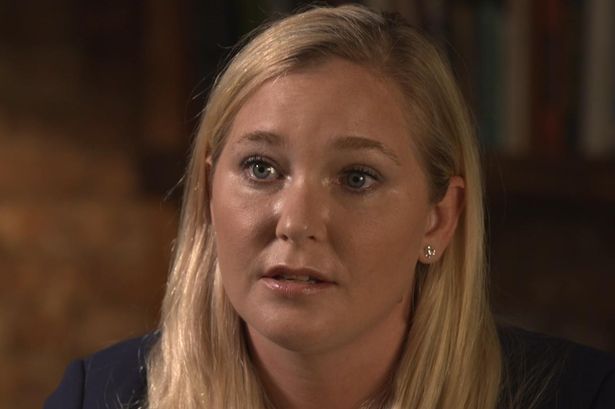
The grieving father of Jeffrey Epstein victim Virginia Giuffre told Piers Morgan on his show Uncensored that he doesn’t think his daughter took her own life
Source link
Huge mobile brand shuts down after 15 years & warns phone owners over urgent deadline to update before permanent closure
A MAJOR tech firm is warning users they must update their phones before the final part of its mobile business is closed down forever.
The South Korean giant gave up on making smartphones after 15 years.
Existing device owners have been able to carry on receiving important Android updates.
But that all comes to an end in just over two months.
LG announced in 2021 that its mobile division was shutting up shop due to poor sales.
The firm had struggled to compete with new rivals such as Oppo and Xiaomi, as well as long-established brands like Samsung.
Its last phone release was the LG Wing 5G, with a unique design featuring two displays – one of which swivels.
At the time LG revealed it was quitting mobiles the firm said it would continue to offer eligible devices software updates for three years.
Those three years are now coming to an end.
Bosses are planning to switch off their update servers on June 30, according to Android Authority.
After that date, it will no longer be possible to download and install Android updates of any kind.
So, if you are still using an LG smartphone, or have one stored somewhere, it’s important to get updating before it’s too late.
“We would like to extend our heartfelt gratitude towards our customers who have loved and supported LG Electronics mobile products,” LG said.
“After the termination date, you will no longer be able to use the software upgrade services.
“If you wish to use the services, we strongly recommend upgrading your software before June 30, 2025.
“Furthermore, as we will no longer provide application updates, you will not be able to download default applications deleted upon initialization.”
The move also spells the end for the LG Bridge software for PCs which allowed mobile users to update too.
Must-know Android tips to boost your phone
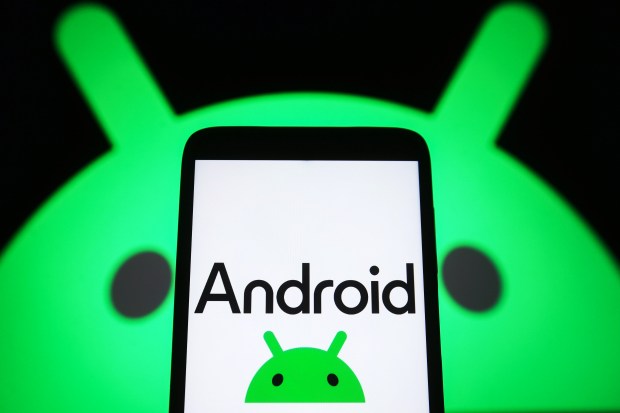
Get the most out of your Android smartphone with these little-known hacks:
Steve Doocy will co-host ‘Fox & Friends’ from Florida
Steve Doocy is giving up his spot on the curvy couch at “Fox & Friends,” but he won’t be leaving the Fox News morning program.
Doocy told viewers Thursday he is moving to Florida where he will perform his co-host duties remotely while Ainsley Earhardt, Lawrence Jones and Brian Kilmeade continue to helm the program from the network’s studio in New York. After putting in nearly three decades on the morning shift at Fox News, he will reduce his work load to three days a week.
“It is a great job but the hours suck,” Doocy said. “After decades of getting up at 3:30 and driving into New York City in the dark, today is the last day I will host this show from the couch. I’m not retiring. I’m not leaving the show, I’m still a host but it’s time for a change.”
Doocy said he will also travel to outside of Florida to do remote segments for “Fox & Friends.”
Doocy, 68, is a Fox News original, joining the conservative-leaning network when it launched in 1996.
(Fox News)
Doocy, 68, is a Fox News original, joining the conservative-leaning network when it launched in 1996. He was the “weather guy” on the original Fox News morning program “Fox X-Press” and became a co-host of “Fox & Friends” when it took over the time period in 1998.
In recent years, Doocy emerged as the member of the “Fox & Friends” team most likely to challenge the Trump-supporting talking points heard throughout the program. His occasionally tense exchanges with Kilmeade — such as when the two clashed over congressional investigations into Joe Biden and his son Hunter — are often highlighted by Fox News critics on social media.
The moments of pushback from Doocy have been noticeable as “Fox & Friends” has long been giving Trump an unfiltered forum to present his views — including his false claim that former President Obama was not born in the U.S. — before entering the political arena as a candidate.
It remains to be seen whether Doocy’s ability to provide a counterpoint on issues will be diminished by not being in the studio. Doocy assured viewers that he will continue to speak up.
“I will continue to join the couch crew for commentary,” he said. “Don’t worry — you will still hear my voice loud and clear.”
The program showed a congratulatory video message from President Trump. “You’ve always treated me fairly — sometimes a little more fairly than other times, but that’s OK,” Trump said. “… You are a very, very good man.”
Doocy’s son, Peter Doocy, is senior White House correspondent for Fox News and his daughter-in-law, Hillary Vaughn, is a Washington, D.C.-based correspondent for Fox Business Network. Peter Doocy and Vaughn are married.
Before joining Fox News, Steve Doocy was a features reporter at the Washington, D.C., station WRC-TV, a host for daytime NBC talk show “House Party,” and a host on the cable network America’s Talking, which was the precursor to MSNBC.
Cameron Bancroft hopes for Australia recall but has never spoken to coach Andrew McDonald
McDonald became Australia coach in April 2022 in place of Justin Langer.
Under McDonald’s leadership, Australia won the 2023 World Cup, retained the Ashes in England in 2023 and won last winter’s Border-Gavaskar Trophy against India.
Bancroft said he has spoken to Australia’s selectors – head selector George Bailey chairs meetings – in that time.
The Western Australian was the leading top-order batter across the 2022-23 and 2023-24 Sheffield Shield seasons when David Warner and Usman Khawaja were secure as Australia’s openers and then Steve Smith was promoted following Warner’s retirement.
With Smith moved back down to number four at the start of the last Australian summer an vacancy became available but Bancroft had a poor run of form and was overlooked for Nathan McSweeney and then 19-year-old Sam Konstas.
“Timing wasn’t great,” Bancroft said.
“Also the reality is form comes and goes, runs come and go. That’s just cricket.
“I have never spoken to Andrew McDonald.
“He has never spoken to me either. Understandably his focus is with the Australia team and that absolutely makes sense.”
Bancroft is currently captaining Gloucestershire in the County Championship and began the season with 163 against Glamorgan.
Konstas impressed with 60 on his Test debut against India in December but was overlooked for Australia’s most recent Test series in Sri Lanka, leaving doubt around who will partner Khawaja when Australia play South Africa in the World Test Championship final at Lord’s in June.
“Of course that [an Australia recall] is something that motivates me,” Bancroft said.
“I just try and go about my business and enjoy playing wherever I am, giving 100% to each ball and moment.
“I know the way cricket works. It is still a driving force. I am just looking to enjoy my cricket and do my best.”
Acting South Korean President Han Duck-soo steps down ahead of expected run for presidency
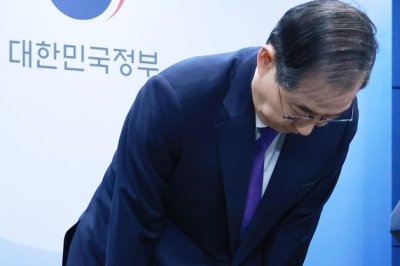
South Korean acting President and Prime Minister Han Duck-soo bows after delivering an address to the nation on Thursday at the government complex in Seoul in which he announced his resignation, in a move widely seen as signaling his intention to run in a snap presidential election next month. Photo by Yonhap/EPA-EFE
May 1 (UPI) — South Korean acting president Han Duck-soo resigned his position as prime minister Thursday ahead of a likely run for president in a June 3 election called to replace President Yoon Suk Yeol who was removed from office over a botched bid to impose martial law.
Han said that he stepped down to “do what I can, do what I must, for us to overcome the crisis we face,” he said, referring to recent political upheaval and the threat it posed to South Korea’s economy and well-being.
“Thinking of the weight of the responsibility I carry at this grave time, after thinking long and carefully about whether such a decision is right and inevitable, I decided that if this is the only way, I must take it,” he said in a televised address in which he did not explicitly announce his candidacy. “I have two roads in front of me. One is to complete the important mission I currently have, while the other is to lay down that important mission and bear a greater responsibility.”
Han’s resignation came hours after the Supreme Court ordered a retrial of Democratic Party candidate and front-runner for president, former Seongnam Mayor Lee Jae-myung for alleged election law violations dating back to 2021, for which he received a one-year prison sentence, suspended for two years, in November.
A lower court subsequently acquitted Lee but the decision by the highest court in the land to overturn the ruling, saying it considered him guilty, puts his candidacy under renewed pressure due to rules barring anyone fined $700 or more for election law convictions from standing for elected office for five years, or 10 years if a prison sentence is handed down.
Yoon’s People Power Party called for Lee to be disqualified from the race or step aside of his own accord, but Lee vowed to fight on, alleging the charges against him were trumped up and politically motivated.
“I will only trust the people and move ahead confidently,” he said in a statement posted on social media in which he said voters and not courts should determine the fate of South Korea.
Elements of the PPP, which is due to select its candidate Saturday, are backing a Han presidency even though he does not belong to South Korea’s second-largest party or any other party — meaning he would have to work out a deal with whoever the party selects over who heads the PPP ticket in June.
The two candidates vying to represent the PPP on the ballot — former party leader Han Dong-hoon and former Labor Minister Kim Moon-soo — have both indicated a willingness to have Han on their tickets.
Children suffer as Israel’s blockade on Gaza aid reaches 2 months
Two months of Israel’s aid blockade on Gaza have taken a devastating toll on Palestinians especially children.
Source link
Woman ‘yelled at’ on train over her bag – but there’s one big problem
A woman has shared her annoyance after she was ‘yelled at’ by another train passenger for not moving her bag – but she claims she did nothing wrong and the other woman was just ‘rude’
A woman has claimed she was “yelled at” on a train for refusing to move her bag. Taking the train can be a nifty alternative to driving, but it’s not without its hitches. Especially during rush hour, trains can become packed, leaving some passengers standing due to a lack of seats.
It’s generally considered good manners to clear bags from adjacent seats when trains fill up, allowing fellow travellers to sit. Bags can be held or stowed in overhead compartments or on luggage racks under these circumstances. But one woman found herself perplexed when another passenger confronted her for not moving her bag while commuting home from work, and she chose not to oblige their demand.
In a TikTok video, Tasha recounted that she had a “pretty big” bag with her, but upon boarding the train, “loads of seats were available”. She sat in an empty two-seater and didn’t think much of it.
Tasha emphasised that she didn’t place her bag on the neighbouring seat but kept it on her lap, ensuring that if someone needed the space next to her, it was accessible for them to sit.
At the next stop, Tasha encountered a rather peculiar situation when another lady got on the train and sat “right next” to her despite many empty seats. Tasha tried to compact her bag to make more room, but was baffled as to why this woman chose to sit beside her.
Shortly after, while Tasha was unwinding and gazing out of the window, she got an abrupt nudge from the woman, who then began to yell at her to shift her bag.
Reflecting on the incident, Tasha recounted: “I look at her in shock and she goes, ‘Move your f***ing bag’. She came in strong, she was not playing.
“Bear in mind, it’s one of those long bags, and I was literally trying to push it together for the whole journey. It’s not like I’d just dumped my massive bag on my lap.”
Despite Tasha’s apology and attempt to “compress” her bag as neatly as possible, explaining that it was packed full, it wasn’t satisfactory for the irate commuter, who resorted to cursing and escalating her tone, insisting on moving the bag.
Tasha suggested multiple alternative seats, showing the woman where she could sit with ample space.
However, the woman persisted, arguing that it wasn’t about the availability of seats, as Tasha doesn’t “own” them. Things intensified, and after another attempted shove, Tasha reached her limit and decided to relocate herself.
She recounted her fear saying: “I thought, I’m actually scared of you. As much as I want to stand my ground, I’m worried you’re going to do something. I just got my stuff and moved to an empty seat. And not one [other passenger] said a thing, even though I could see people were literally gobsmacked.”
Followers expressed their support for Tasha, lamenting that she was forced to change seats and urging her to inform the British Transport Police about the ordeal.
One commenter posted: “She was absolutely looking to pick a fight with you. I’d call British Transport Police, give them the details of the train. There’s surely CCTV. This is assault, and she can’t get away with it.”
Another sympathiser remarked: “Sadly, there are people in this world who are just so miserable and out to cause hurt for other people. Don’t let people like this get in your head.”
The British Transport Police can be contacted to report various incidents that take place on public transport, such as lost or found items, hate crime, antisocial behaviour, or sexual offences.
For more information, visit the British Transport Police website.
New train route to link one of UK’s best seaside towns with major northern city
Aviva Grand Central has announced plans for a new service that would link up Newcastle and Brighton for the first time. It is likely to be up and running from December 2026
A new train route would directly link two cities at opposite ends of the country.
Aviva Grand Central has announced plans for a new service that would link up Newcastle and Brighton for the first time. The new railway journey would directly connect the south coast with the northeast, travelling via Birmingham, York and London Gatwick.
It would mean that travellers would no longer need to change trains in London, saving time and effort for those fancying a trip north or south. Arriva’s Grand Central brand has submitted an application to the Office of Rail and Road (ORR) for permission to start the new service.
Although the travel time hasn’t been revealed yet, the current average journey time from Brighton to Newcastle is four hours and 20 minutes. It is likely that the trip would be quicker without a stop in the middle. If the request is approved, then the service is likely to be up and running five times a day in each direction from December next year.
READ MORE: World’s biggest plane ‘Skytanic’ is longer than a football pitch and will take-off in 2030
Here’s the full list of proposed stops for the route.
- Newcastle
- Durham
- Darlington
- Northallerton
- York
- Doncaster
- Sheffield
- Derby
- Burton-on-Trent
- Birmingham New Street
- Warwick Parkway
- Banbury
- Oxford
- Reading
- Wokingham
- Guildford
- Redhill
- London Gatwick
- Haywards Heath
- Brighton
Paul Hutchings, managing director of Arriva UK Trains’ rail services, said: “We’re committed to connecting communities and enabling more people to travel in ways that are convenient and sustainable, so we’re very pleased to be submitting this application for the first direct service between Newcastle and Brighton, opening up new travel opportunities and making better use of available network capacity – all while building on Grand Central’s proud history of connecting traditionally underserved communities.”
Each of the new trains will have capacity for 300 passengers, including luggage space for airport travellers, in addition to on-board catering, wi-fi and charging points. There is plenty for Geordies visiting Brighton to look forward to, and vice versa. Check out our guides to both cities, which include a rundown of the best things to do in both.
The new route will also provide a direct train link to Gatwick for towns in the North East and Midlands such as Northallerton, Warwick and Burton-on-Trent. That means an extended list of destinations abroad for those customers to choose from.
Jonathan Pollard, chief commercial officer of Gatwick Airport, said: ‘We welcome Arriva’s exploration of a regular service between London Gatwick, the Midlands and North East, and are excited about the opportunities this proposed service could bring.
“London Gatwick is keen to encourage passengers to use public transport and this enhanced connectivity would support underserved areas, while strengthening and growing our catchment. London Gatwick already boasts an extensive network supported by strong relationships with transport providers, making the airport the best connected in the UK by public transport.”
Grand Central currently runs services connecting Sunderland and Bradford with London King’s Cross. The Sunderland service runs via Hartlepool, Eaglescliffe, Northallerton, Thirsk, York and Peterborough.
Major UK airport makes huge change to parking prices as minimum charge for holidaymakers is hiked
A MAJOR UK airport has made a significant change to its parking prices.
Glasgow Airport has increased the minimum drop-off fee for holidaymakers to £6.
This change, affecting the special drop-off zone near the departures area, represents a 50p increase from the previous rate of £5.50.
Located on the west coast of Scotland, Glasgow Airport is one of the busiest transport hubs in the UK, serving thousands of holidaymakers and business travelers alike.
The airport’s drop-off zone allows passengers to be quickly dropped off near the terminal, with a maximum stay of 15 minutes.
After this, an additional £1 is charged for every minute beyond the allotted time.
A spokesperson for the airport explained that the price hike is part of a comprehensive review of its parking facilities.
They clarified: “It is important to note there are no changes to our free drop-off facility where customers can park for up to one hour.
“This is located in our long-stay car park, and passengers can use a free, on-demand 24-hour shuttle service to and from the terminal.”
The long-stay car park remains a cost-effective option for travelers planning to park for longer periods, with the added convenience of shuttle buses running frequently to the terminal.
While the shuttle service aims to minimise any inconvenience, some passengers may still prefer the convenience of the short-term drop-off zones, especially for quick visits.
For those planning to spend a little longer at the airport, the short-stay car park has also seen a price increase.
The new rate stands at £8 for a 20-minute stay, up from £7.
The prices continue to climb with £15 for one hour and £24 for up to two hours, making it essential for travelers to plan ahead and consider alternative parking options.
Glasgow Airport has emphasised that the changes are part of its ongoing efforts to enhance the quality of its parking services and ensure a smoother experience for passengers.
However, some travellers have voiced concerns about the rising costs, especially as airports across the UK have been facing similar hikes in recent years.
The new pricing structure is likely to impact both local residents and those flying in from other parts of the UK.
While the free drop-off option remains a viable alternative for many, the cost of short-term parking may be a deterrent for those simply accompanying loved ones to the airport.
As Glasgow Airport continues to make adjustments to its parking system, passengers will need to carefully evaluate their parking choices to avoid unexpected fees.


